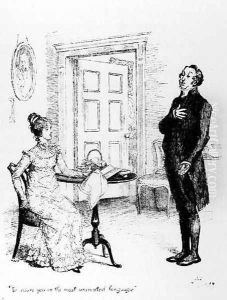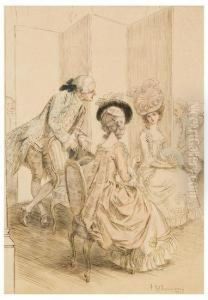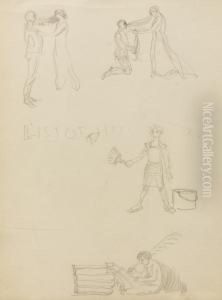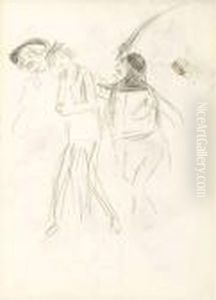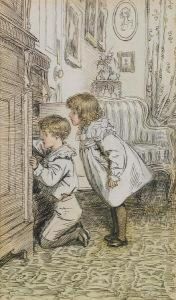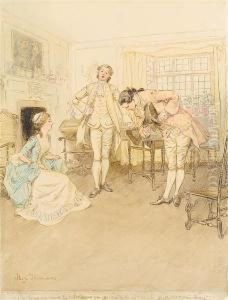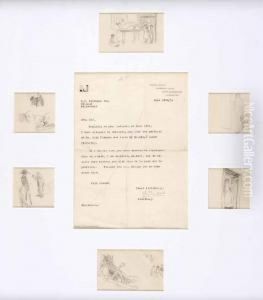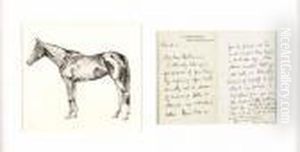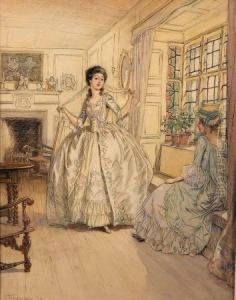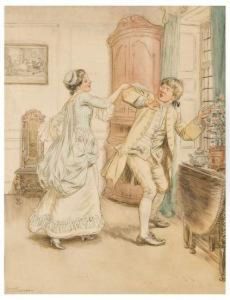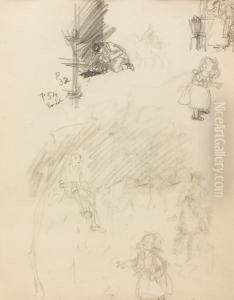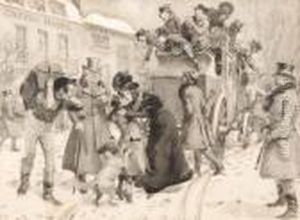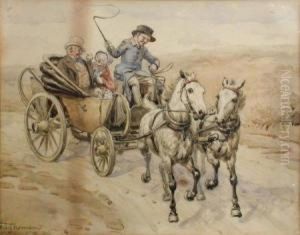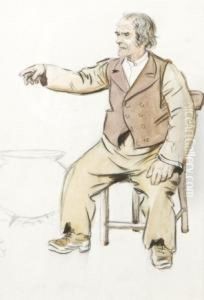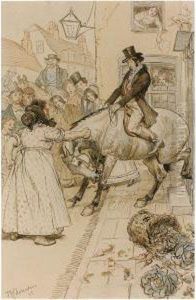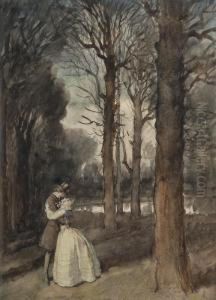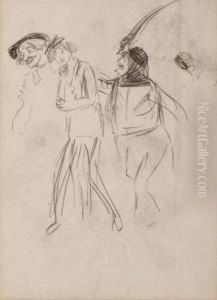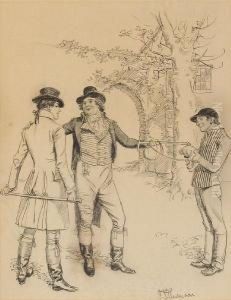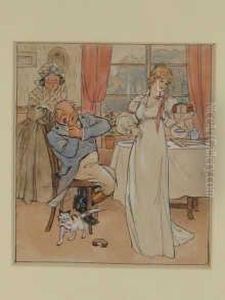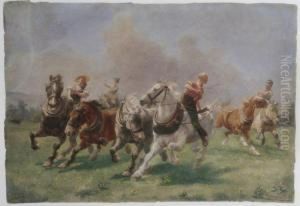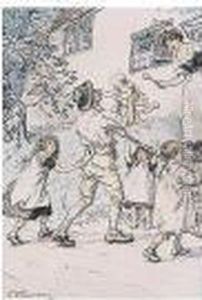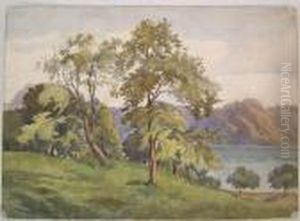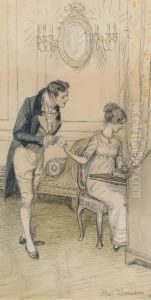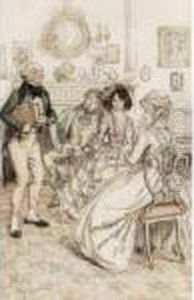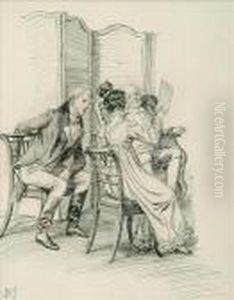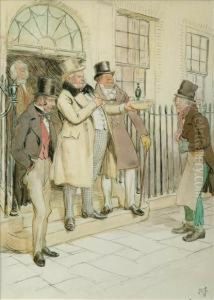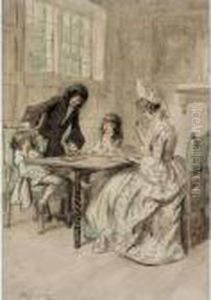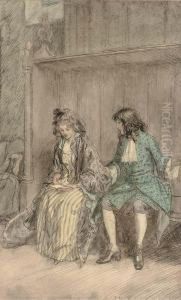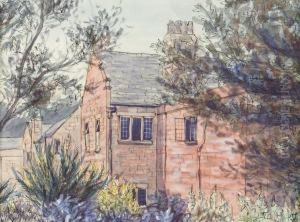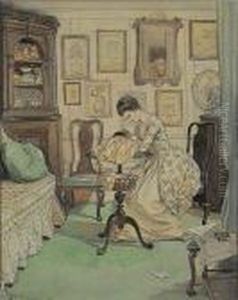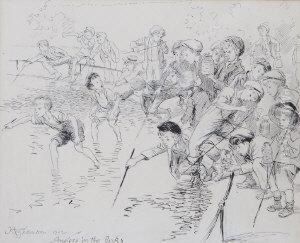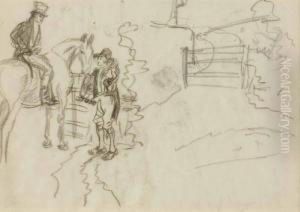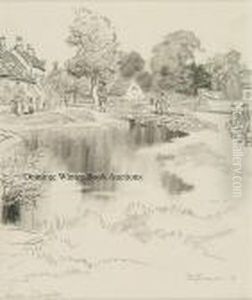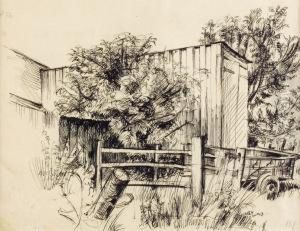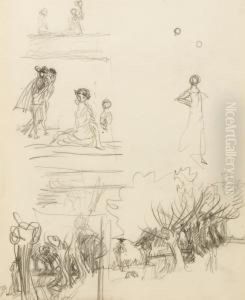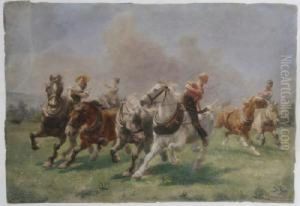Hugh Thomson Paintings
Hugh Thomson was an Irish illustrator, born on June 1, 1860, in Coleraine, a large town in County Londonderry, Northern Ireland. Growing up in a country rich in folklore and surrounded by the scenic landscapes of Ireland, Thomson developed a keen interest in art from a young age. His early life in Ireland deeply influenced his later works, which often featured the bucolic and the pastoral, imbued with a sense of whimsy and elegance. Thomson's career as an illustrator took off when he moved to London in the 1880s, a period that marked the golden age of British book illustration.
Thomson is best known for his pen and ink illustrations of works by authors such as Jane Austen, Charles Dickens, and William Shakespeare. His illustrations for Jane Austen's novels, beginning with 'Pride and Prejudice' in 1894, are among his most celebrated. These works are characterized by their delicate lines, attention to detail, and the portrayal of the characters and settings in a manner that was both true to the era and appealing to the readers of his time. Thomson's style contributed significantly to the Victorian and Edwardian visual culture, encapsulating the ideals and aesthetics of an age that was increasingly interested in the romantic and the nostalgic.
Throughout his career, Thomson worked for several major publishing houses, including Macmillan & Co. His work was not limited to book illustrations; he also contributed to periodicals and designed greeting cards, showcasing his versatility as an artist. Despite the evocative nature of his illustrations, Thomson's work is often noted for its restraint and subtlety, qualities that allowed the imaginations of readers to flourish. His approach to illustration was influential in setting the tone for many illustrated books of the late 19th and early 20th centuries.
Hugh Thomson's legacy is that of a pivotal figure in the world of book illustration, whose work continues to be admired for its charm, elegance, and ability to transcend the boundaries of time and culture. He passed away on May 7, 1920, in Wandsworth, London, but his illustrations remain a testament to the enduring appeal of the illustrated book and the capacity of art to bring literature to life.
